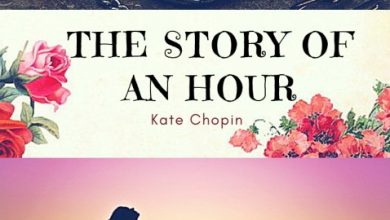
Journey is a powerful story that critiques the idea of “modernization” and relates its impact on indigenous cultures. Written in the third person point of view, the story engages with the themes of identity, change, conflict of values and the impact of modernization. The main character is an unnamed seventy-one-year-old man, who reflects on how much things have changed as he travels to the town’s government office. This change slowly begins encroaching upon his personal life, and a point is reached when his very identity and the identity of his people comes under threat.
The Journey, published in 1980, is written by Patricia Grace. She is the first Maori woman to have published a novel.
Journey | Summary
The story begins with a seventy-one-year-old man preparing to travel somewhere. He prefers to call it a ‘journey’ to maintain a sense of excitement. He uses the bathroom beforehand because he does not like public lavatories. He does not want to be thought of as an old uncle today- he can get around town just as well as a youngster. As he sits in the taxis, he thinks they smell the same, the shops passing by all look the same. He makes conversation with the driver, and then gets off at the train station. He does not want people to fuss over him- he is perfectly capable, and is happy to have a carriage to himself from where he can see everything pass by through the window. He notices that this land they are travelling on used to be the sea.
After some time, the train becomes full. He sees kids wearing ‘plastic’ clothes. Outside, the houses still look the same as they always did. As the train moves into the crowded part of town, the old man notices several new aspects- asphalt and steels and high-rise buildings. When he looks back at the children, one of them reminds him of his childhood friend, George, and he wonders how George has been. When the train ride is over, he decides that the railway station looks the same, crowded as always, and the same statue of Kupe with his woman and his priest remains in place. The marble floor he used to like is now a hindrance, as he is barely able to walk on it. The railway stations used to be full of starving people, but the old man never let such a fate fall upon his own family.
Next, time has elapsed. The old man is on his way home, with an ache on his foot. For a moment, his mind wanders to the past, when he would wait in this station and watch out for George. We then see what happened during his visit to the city’s government office- the city planners were going to build parking lots over the man’s ancestral land. The man explained to a worker named Paul that his nieces and nephews had been waiting for years, and it rightfully belonged to him, but he was told that they would all receive monetary compensation. No matter how much the old man tried to reason and argue, his efforts were futile- he was not able to understand the planner’s explanation. In frustration, he ended their discussion with a damaging kick to Paul’s desk, which had him removed from the office immediately. The flashback then ends, and the story returns to the present, as the old man is about to go back home. He is painfully aware of the ache in his foot from the kick. He wonders if he should go looking for George.
He could hear them talk about him as he exited- he is old, not deaf. In the taxi on the way home, he once again makes conversation with the driver, who can tell he is disheartened. The driver drops him off right at his doorstep, telling him to be safe and praising his garden. Finally, the old man tells his family, who were waiting with subtle curiosity to hear about the day’s events, that he wants his body cremated when he dies, rather than buried. The cemetery is no longer safe- nothing belongs to them anymore, and he does not want his remains messed with after his death. The story ends with the old man sitting down and looking at his hands in frustration, unable to do a thing more.
Journey | Analysis
Patricia Grace is a writer from New Zealand, known for making references to Maori culture and language. She is the first Maori woman to have published a novel. Her style is elegant and effective – especially as seen in Journey, where she forgoes the use of certain punctuations in order to create a tense and flowing tone. The use of stream of consciousness technique in the Journey allows the reader to gain a perspective of the inner life of the narrator. This transitioning between the subjective world of the unnamed narrator and the objective reality that he’s faced with presents a tension where, on the one hand, the memories of the narrator are under his control while on the other hand, the moment in which he lives and the material reality that his life is faced with are completely out of his grasp. This is also reflected in the constant tension created by the theme of continuity and change.
All of these elements enrich the character of the old man in the story and endears him to the reader. The reader thus empathizes with the old man’s perspective, despite the story being written in third-person. Some themes of Journey are change, conflicting beliefs and values, the implications of modernization and land-ownership. It also tackles the slight helplessness and frustration towards being ‘fussed over’ that comes with old age. The title ‘Journey’ is important, as it might not just be literal- it is also the journey to the old man’s realization that so much has changed. It is also interesting to note that the idea of one’s ancestral land is a special and important part of Maori culture– personal land is often divided among the family for generations, forming a close bond. We may use this insight of the practice to understand the old man’s feelings during the climax of the story. Further, the historical background of Colonialism and its impact on indigenous ways of living looms large in the backdrop of the story, thus providing a great import to the idea of home and belonging to one’s land.
A recurring element, introduced in the opening, is the man’s distaste at being seen as old. “But not really so old, they made him old.”, “not what you call properly old” and “Seventy-one is all.” This also marks his independent personality- he has grown up doing everything himself, providing for his family, and being capable of even physical work. The idea that others no longer perceive him that way irks him greatly. We also see that his sharp eye for change– being able to notice what has stayed the same and what hasn’t over the years- is an attempt to feel younger and feel as though if nothing has changed externally, then he has not changed either. The Pekhas/ Pakehas (meaning white New Zealanders of European descent) think constantly about development- the man himself is heading to meet the city planners- which is something he does not approve of.
We must also note the features the old man notices in other people- the first thing he points out is whether they look young or old. The “young” cab driver, the “young” man working at the ticket counter… these are the ways in which he identifies people around him at first glance. His slight contempt towards the younger generation symbolizes his dislike towards modernization the evolution of the town and the lifestyle of the people. He believes it is the youth that facilitates the change, and this facilitates his unease towards them. When he sees a child who looks like his old friend George, he immediately feels happier- this symbolizes the joy of the past and desire to hold onto it. He also thinks, as he sits in the train, that there are “things they don’t know, all those young people” which gives the readers the understanding that he wants to prove his competency. Interestingly, he does not say this to anyone- it remains a thought. Through this, we realize that the main person he is trying to remind or convince may be himself. It is possible that his interactions and observations have caused a lessened confidence, which he is trying to bring back up. However, analyzing his thoughts merely as that of an elderly individual may not be as fruitful an exercise as compared to contextualizing it to the experiences of indigenous cultures who had to pay a heavy price for the idea of modernization. The wariness of the old man seen in this context doesn’t become the thoughts of a senile septuagenarian but contains within itself the mistrust of a section of humanity whose ways of living had been negated by another in the name of “change”.
Throughout the train journey, the old man pays a great attention to land. He is also meeting the city planners to discuss his ancestral land. Land is not only an important part of Maori culture, but it gives the man a sense of ownership- that as everything around him changes, this is something he is in charge of. Now, when that stability begins to shake, he feels utter helplessness on being faced with the fact that those in a position greater than his own can take away something that belongs to him and is a part of himself. It is as though they have a right over him, which is a very unpleasant thought. It makes him feel powerless, which is a recurrent aspect in the story. The feeling of powerlessness when he is not in control of his own property, when he needs help- or when others think he needs help- and when he realizes how much has evolved in front of him, thoroughly frustrates him. He mentions as he arrives at the train station that “Their family hadn’t starved, the old man had seen to that.”- from this, we can tell how capable he was in his youth, and more importantly, how dire the situation was. This change from being in-charge to the feeling powerless in itself is a journey- a nod to the title.
When the old man is waiting at the station, his foot hurts. This is in reference to the way he kicked Paul’s desk, as well as the natural growing pains that one experiences in old age. During his argument with the bureaucratic officers, his frustration grows at being unable to understand many of their explanations. The land has sentimental value, and the overriding of both a familial and sentimental rights represents the grand scheme of modernization. In the end, everything will belong to the city. Besides this, Paul says “They’d be given equivalent land or monetary compensation of course.” when the old man talks about his nieces and nephews. Here, we see the disregard of any emotional aspect by the city planners. Ancestral land is close to the family’s heart, and cannot be replaced by other land or money- it is not the literal land or finance that holds the meaning.
When Paul explains some future plans, the old man replies “well, I’ll be dead by then” which is similar to a thought he has in the train ride. These subtle lines hint at the decreased zest for life as his abilities wear thin. Adaptability to change is an important theme in this story- the city planners have embraced it to the point of overlooking less technical detail, while the old man has a tough time even understanding it. In the end, the man is unable to regain his land, and kicks Paul’s desk in anger. This gesture symbolizes futility. It does nothing except cause a ruckus and cause pain to the man’s own leg- it does not help his case with the land in the slightest. This represents the same futility of his requests and reasoning- it will be heard, but not listened to. No matter how much he speaks and insists, he will go nowhere with it. It is similar to how the old man feels about the fast-paced evolution of the world he once knew- no matter how hard he tries to keep up, he is unable to do so. It is saddening to note the way the old man is treated, despite asking for something which he has a complete right to. It goes to show diabolic grip the societal power hierarchy has on the lives of individuals.
After kicking the table, the old man staunchly refuses to accept that he is limping. “Going, not limping,” he says several times. This displays an unwillingness to show any sort of weakness, mental or physical. He does not want to be “fussed over” or looked down upon. When he finally reaches home, the taxi driver compliments the garden. This garden plays a key role in the man’s life- it represents the only piece of land the old man has real control over. It is a microcosm of the word for this man, He may do anything he wants with the garden, unlike his ancestral land. He views it as something under his full control- it is necessary for him, as authority slips away in all directions, to have something to hold onto as his own. This garden symbolizes his remaining strip of true freedom the man has left for himself.
At the end of the story, he announces to his family that he wants to be cremated rather than buried because “the cemeteries are not safe.” This is such a powerful line and is in reference to the cemeteries being planned and structured by the city planners and the town government. Therefore, they have a right to it- having a right to the cemetery means having a right to all the tombstones, bones and remains, as well. It’s almost as if people like the old ma have no right to live and no right to die. He is adamant that nobody, least of all the town, should be able to touch his remains. For this reason, he would rather become ash. Yet as soon as he says this, he sits in his room alone, with the door closed, looking at his hands for a long time.
The ending of The Journey symbolizes solitude and defeat. The man feels alone, as though nobody understands him- and he has realized that so much has changed around him that he is no longer as efficient and knowledgeable as he once thought. It is a difficult realization to come to, one that frustrates and saddens him, and the readers equally. The story ends on a despondent note, as we are left to wonder about the old man and how he deals with this awareness, as well as feel the ache of injustice and empathy from the imagery created by Grace. The picture of an old man, alone and disheartened, sitting on the bed does not leave the readers’ minds, even as the story draws to a close. The journey, for him, has ended.




